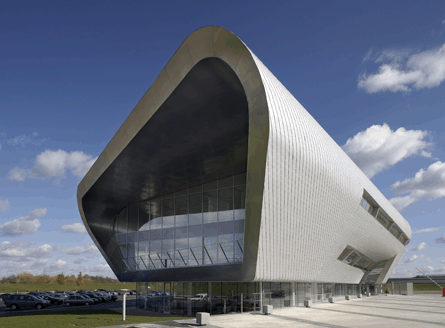The name Farnborough has for years been synonymous with the international biennial air show but among the global business aviation community the brand now symbolises Europe's most iconic business airport.
Owned and operated by TAG Aviation since 2003 the former military facility is now a symbol of London's status as Europe's centre of business aviation. TAG has spent huge sums rebuilding, London's only dedicated business aviation airport, which now boasts a striking terminal building and three iconic wave hangars. The airport also houses the UK-based sales and marketing operations of a number of airframers, including Bombardier, Cessna, Embraer and HondaJet. FlightSafety International also has a training centre on the site. TAG also owns a luxury hotel called the Aviator - which opened just before the previous air show in 2008.
"The Aviator will house TAG's corporate hospitality this year," says airport company chief executive Brandon O'Reilly. "Our customers are both local and international and will be flying into the show which is a huge draw and does raise the profile of the airport." "The Aviator hotel is a great product and we will be maximising our presence at Farnborough by entertaining industry executives and non-aerospace VIPs," says O'Reilly.
 |
|---|
© TAG Aviation |
TAG Farnborough and TAG Aviation have moved their air show chalet to the Aviator, conveniently located just a short walk from the show site with access via the main air show entrance of Gate B. "We are lucky to have this fabulous hotel, with its prime views over the show site, integrated with the Farnborough air show," O'Reilly adds.
Although the biennial event attracts thousands of visitors from across the globe, O'Reilly says movements at the airport will remain static throughout the show week as many visitors adjust their travel plans.
Overall, however, movements at Farnborough are climbing once again after a period of stifled growth. "Excluding the freak factors such as the volcanic ash cloud in April and the severe weather at the start of the year, we have seen movements climb by around 10% month on month compared with 2009," O'Reilly says. "We expect to reach around 25,000 movements this year, 2,000 more than last year's tally."
While the movement hike is cause for optimism, Farnborough is faced with the unwelcome predicament that its movement ceiling of 28,000 - set by the local authority - could be reached next year as the business aviation economy continues its recovery.
Despite being the cradle of UK aviation and home to a number of aerospace and defence companies including BAE Systems and Qinetiq, not everyone in the local community welcomes the airport and a small yet outspoken minority are vociferously opposed to any upward adjustment in the movement ceiling.
This local deep-rooted resentment towards the airport's growth plans persuaded Rushmoor Borough Council last year to reject TAG's planning application for a hike in annual movements at the airport to 50,000 by 2019, blaming a possible increase in noise levels and safety concerns from residents.
The planning application was lodged following TAG's extensive and lengthy public consultation process to win public support.
Conscious of its commitment to be a "good neighbour", TAG had already introduced a quiet flying programme designed to alter flight patterns and reduce residents' exposure to noise. Furthermore, it had pledged a number of other commitments including not to change its operating hours, build additional runways or terminal, or alter the proportion of larger business jet flights allowed at present. TAG has also made a commitment to tackle noise and take an industry-leading approach to phase out all but the most modern and quietest categories of aircraft.
TAG lodged an appeal against the planning rejection and the UK government launched a public enquiry into the expansion proposals, which was completed last month. The final decision lies in the hands of two government ministers who are expected to make their pronouncements next year.
"We just want to make better use of existing infrastructure and see what balances need to be struck with the community to grow the number of flights at the airport [to 50,000 air traffic movements by 2019] in a responsible way," says O'Reilly.
In the meantime, TAG is pressing ahead with the final phase of the airport's development, which has cost the company around £100 million ($148 million) to date. The investment has funded among others a new air traffic control tower, terminal building, hotel, three aircraft hangars, a retrofitted and resurfaced runway and an instrument landing system.
TAG is now building three additional wave hangars - which are scheduled for completion in the third quarter of 2011 and the apron work is now complete. TAG is also replacing the "C-shed" which stores ground equipment with a modern building, which is scheduled for completion ahead of the London Olympics in 2012.
- All the latest news, video and images from the 2010 Farnborough air show - New this year, live streaming video of each day's flying display
- All the latest news, video and images from the 2012 Farnborough air show
Source: Flight Daily News
















